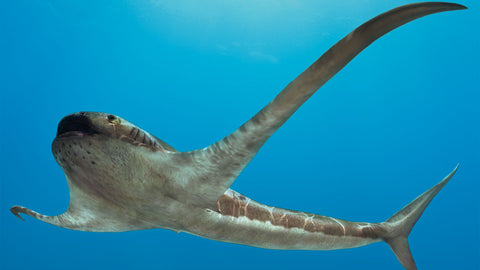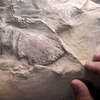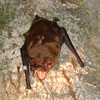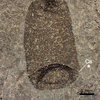Cool Things! (Vol 2.3)

Hello, everyone!
Welcome to the April 2021 issue of Cool Things! Each month, we want to bring you news on scientific discoveries, historical information, and other interesting finds from across the internet. We have a lot to share today, so let's dive in!
NASA's Answer to Mini Museum

Above: An illustration of Ingenuity on Mars. Credit: NASA
Later this week, the Martian rover Perseverance is set to deploy a solar powered helicopter on the red planet's surface. The helicopter, known as Ingenuity, will serve as a scout for the rover and will also be the first powered flight on another planet! To honor this achievement, a small swatch of fabric was attached to the machine; one that was once a part of the 1903 Wright Flyer. Not too different to what we do here at Mini Museum! (though our museums have yet to end up in space)
Billions and Billions of Stars

Above: A galaxy of our own!
The night sky is as beautiful as it is vast, and humans have been staring into it since the beginning of our time on Earth. Those of us fascinated by it have always wanted to see more. This map from the Legacy Survey Sky Images should help satisfy that curiosity. Compiled by pictures taken from 3 telescopes over 6 years, the map contains over 1.6 billion objects within it: stars, galaxies, quasars, and more. The map was built in the hopes of creating a 3d rendering of the night sky, but the full thing can be viewed in your browser right now! Check it out!
The First Coppersmiths

Above: Arrowhead replicas from Kent State University. Credit: Michelle Bebber
Human use of copper dates back a long time, with artifacts in the Middle East going back to 9000 BCE. What you might not know is that on the other side of the world, Native Americans were using copper in just the same way. In fact, according to new research, Native American cultures may actually predate the rest of the world in copper tools by about 500 years!
The coppersmith culture of the Americas lasted between 9500-7000 BCE, possibly making it the oldest in the world. Curiously, tools after this date go back to being made of stone and bone. It's not that the knowledge was lost though; replica testing shows that the bone tools were just as effective as copper and easier to make too. If you're interested in learning more about how copper was used in the ancient world, you can read more on our site!
Visit an Alien Planet!

Above: The Tentaclastome finds a delicious Chemophyte! Credit: Biblaridion
Looking for a fun vacation spot? Try TIRA 292b, home of the Tentaclastome! This planet is part of a spectuative series by Youtuber Biblaridion called Alien Biospheres. This project explores the evolution of life on a fictional planet. Biblaridion explores the progress on TIRA 292b through a scientific lens, explaining concepts of ecology, climate, evolutionary biology, and more! Plus, he's included some amazing illustrations of the strange creatures that appear on this alien planet! You can check out the full playlist here, but watch out for the elephant spiders!
An Ancient Shark with Wings?

Above: Aquilolamna soars below the ocean. Credit: Oscar Sanisidro
As strange as alien biology is, you don't have to look far on Earth to find some crazy creatures either. A new study in Science examines the Aquilolamna milarcae, a 90 million year old shark with wing-like fins. These fins stretched out almost 2 meters, or 6 and a half feet! Aquilolamna's strange fins allowed it to glide through the water in the way manta rays do today. What makes this find especially interesting is the preservation of body shape, as most ancient sharks are only known today through their teeth. Learn more about this strange shark here!
When the Land Came to Life

Above: An illustration of the Archaen Eon. It's beautiful, but not so conducive to human life. Credit: Peter Sawyer
Without plate tectonics, the Earth would look a whole lot different. The shifting of continents is what keeps our planet dynamic and habitable for us, but it wasn't always that way. The origin of tectonics has always been a topic of some debate in the scientific community, but new information sheds light on when this phenomenon may have started.
By extracting and dating tungsten from ancient rocks, scientists have made a probable case for the first shifting of plate tectonics to have occurred around 3.2 billion years ago. It's old, but not as old as Earth itself. In fact, stromatolites from bacteria date back 3.9 billion years, meaning some life was able to survive well before tectonics began. Thanks to continental collisions though, the environment changed to allow life more complex than bacteria to come into being.
You can read the full article on the study here and collect some tectonic rift material of your own on our site!
That's it for now, but we'll leave you with photo from a winner of our #mymuseum contest. Matt C. sent us this photo of his classroom's collection! It's amazing to see our work inspiring the next generation. Thanks to Matt and all his students!
Send in a photo of your own to photos@minimuseum.com or on Instagram with #mymuseum for a chance to win! More details here.

Featured Product
Joe Frazier Boxing Glove
Cool Things!

Is “Paul is Dead” Dead?: Unpacking One Of Pop Culture’s Most Enduring Conspiracy Theories

Scientists Discover Hooves and Skin in Preserved Dinosaur "Mummies!"
A dinosaur discovery just in time for Halloween! In a new analysis of a group of fossils from Wyoming, Scientists have determined this group of fossils are dinosaur “mummies,” with preserved skin and even hooves.

Scientists Record a Bat Catching Birds Mid-Flight!
Bats, birds, screeches, oh my! In a reverse-Hitchcock twist, a new study reveals that a species of European bat catches and eats birds mid-flight.
Specimen Deep Dives

The House that Ruth Built: The Story of the Old Yankee Stadium

The Queen of the Skies: the Story of the Boeing 747

Old Ironsides: The USS Constitution and the Start of the U.S. Navy
Long Form Articles

The Artist Behind the Macintosh: Susan Kare and Apple Computers
While the two Steves, Jobs and Wozniak, are the most well known faces behind Apple computers, equally important to the products and culture of the company were those who crafted the experience of using their computers through design. The most notable of these visual architects was Susan Kare, a designer responsible for “humanizing” Macintosh computers.

Can I Lick It? Yes You Can!
Have you ever been unable to tell if a fossil was really a fossil, but you were too embarrassed to admit it? Have you ever wanted to lick a fossil just because, but you didn’t want to risk judgment from your peers? Well, good news! You can kill two birds with one stone! Licking a fossil can actually help you determine if it’s the real deal or just another rock.

Is It Legal To Own a Meteorite: How to Start Your Outer Space Collection!
Meteorites are some of the rarest geological specimens to be found on Earth. Of course, since these stones are not of our world, purchasing them can sometimes be a confusing process. Is it legal to own a meteorite? In short, yes! Read on for help starting your cosmic collection!


















